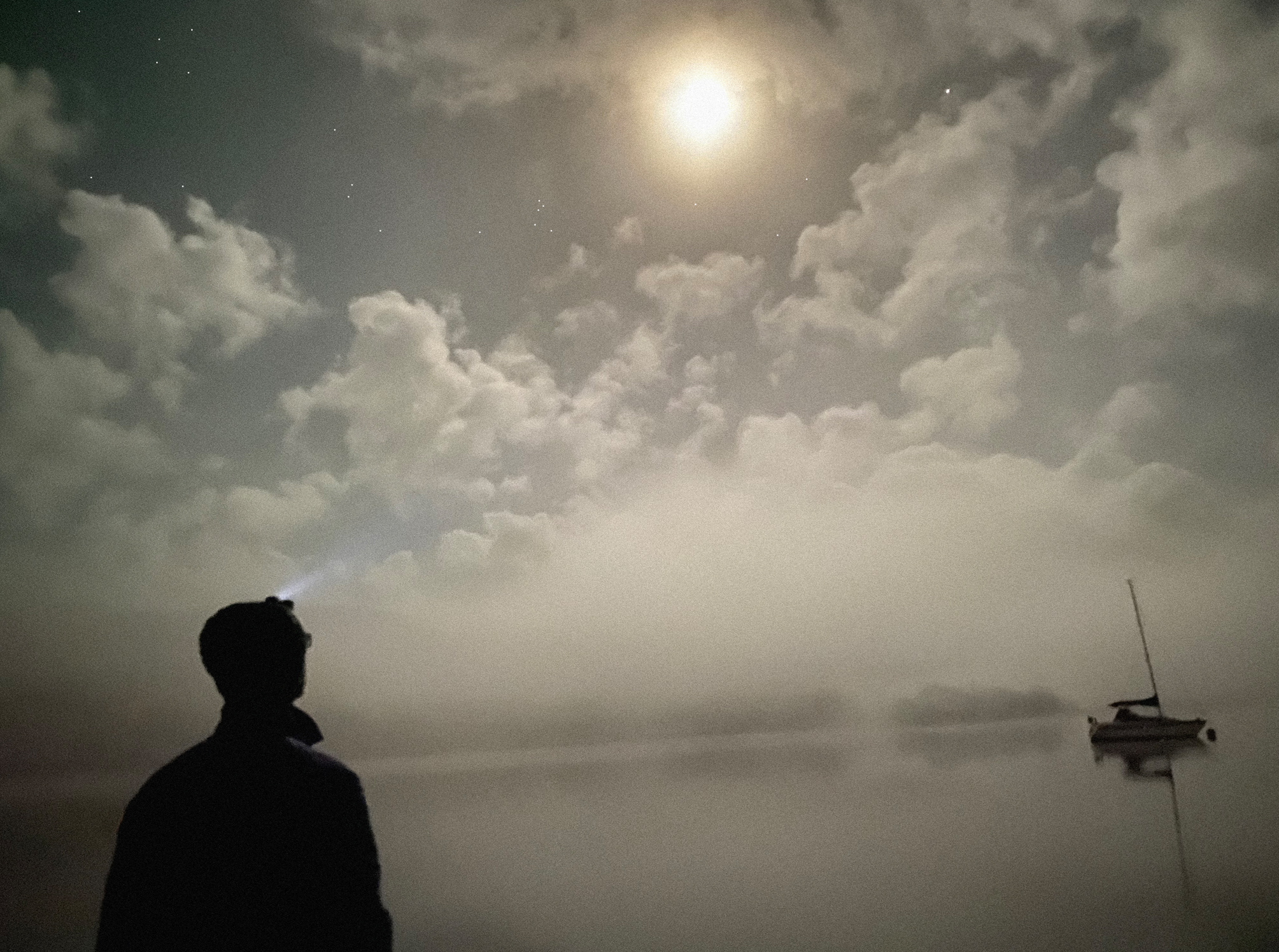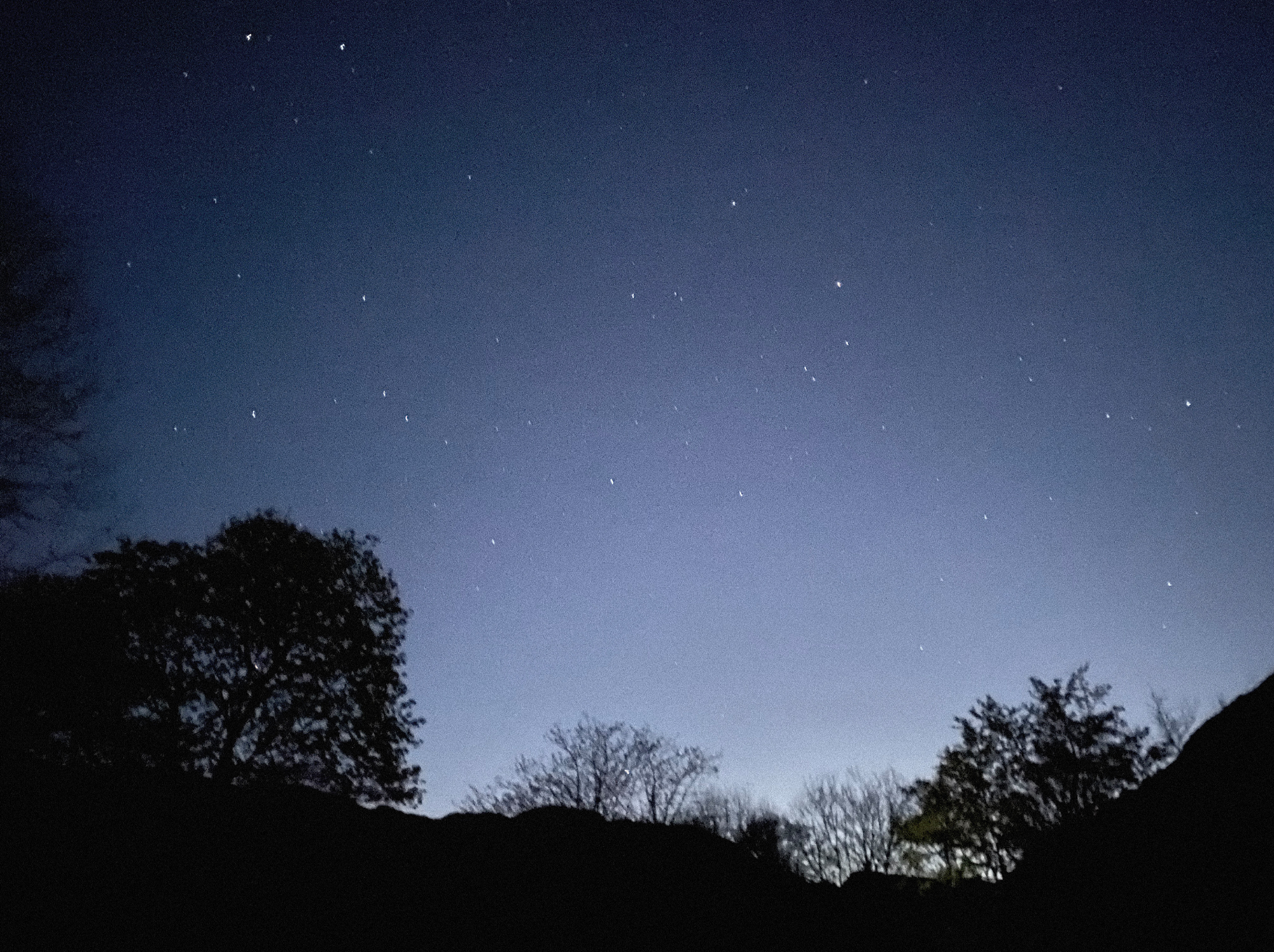At the end of October, when the clocks go back and nights start to draw in, the return of the long dark evenings is often met with sadness. Memories of outdoor evenings are forgotten about until the lighter, warmer spring days return. Winter nights are often spent in front of our screens, flicking between channels and mindlessly scrolling through our phones in search of entertainment, with our brains becoming tired from the information overload.
But what if we set aside the screens and stepped out into our gardens or an outdoor space?
When was the last time you took the time to look up at the night sky? Star gazing is often associated with a need for telescopes or understanding confusing scientific star charts. However, this needn’t be true; we can become more in tune with the world around us by simply stepping outside to observe.
The night sky transforms a familiar landscape by day into a strangely unfamiliar one by night. Stripped of colour and detail, we look for patterns and shapes to guide us, from the outlines of buildings to the bare silhouettes of trees or the distant horizon line of hills. Darkness asks us to look at the landscape with new eyes. By being outdoors, we shift our attention from our buzzing minds and back into our bodies.
Taking time out of your evening – even just for 15 minutes to stop and appreciate the night sky can help you step out of mindless habits. Here we explore three ways in which star gazing can help build a more mindful approach to our winter evenings.

Star gazing brings us into the present moment and encourages patience.
Our busy lives leave our minds jumping from thought to thought, reacting to the dizzying array of stimuli we encounter daily. Stepping outside to look at the night sky provides a single focused task that helps calm our minds, free from distraction.
Limited sight also allows our range of senses to become more attuned. Listen closely to what you can hear – signs of wildlife, the rustle of the wind in the trees or perhaps the bustle of the nearby city. The smell of fresh winter air mixed with distant pine trees. The feel of the wet, decaying autumn leaves underfoot. Tuning into each of our senses gently grounds us in the present moment.
As we step outside to star gaze, our eyes can take up to 15 minutes to adjust to the darkness. This helps foster a sense of patience as we wait for the stars to emerge in our vision, like candles being lit one by one in a darkened room.
Star gazing helps foster a sense of awe, wonder and connection.
As we look up to the expansive skies, it’s impossible not to feel a sense of awe at the galaxy of stars above us which have been around for millions of years. Scientists have described awe as “The feeling of being in the presence of something vast that transcends your understanding of the world.” it’s a feeling that we are part of a larger, more interconnected world beyond our individual thoughts.
In addition, it’s incredible to think that these are the same skies under which our ancestors told their own stories, practised rituals and used the constellations to navigate the land and sea. These are the stars that unite the past with our present world.

Star gazing reminds us to let life unfold.
In so many parts of our lives, we are trying to control the outcome of a situation, placing high expectations on what we want to happen. But circumstances can change in the blink of an eye, and learning to accept the changes life hands us with grace rather than holding tightly onto an outcome helps us to accept the present moment.
Gazing up at the night sky, we have no idea (or control) what we will see. Perhaps we will spot a shooting star darting across the inky sky or a planet twinkling brightly on the horizon, or maybe the clouds will suddenly roll in and impede our view.
Letting go of an expectation of what we want to see and simply surrendering to the moment helps build mindfulness in our everyday lives.

Tips for getting started…
Pick a place for your stargazing adventure – a garden, an outdoor space or even a window in your house. Wrap up warm if you are outside, and perhaps bring your favourite hot drink. Find a comfortable place to sit, stand or lie down.
Before looking up to the sky, become aware of your breath and your senses – what can you hear, smell, touch and taste?
Pick one area of the sky to fix your gaze on, and notice how much more you begin to see as your eyes adjust to the darkness. Try focusing your attention on one star in particular for a few breaths.
Before returning inside, notice how you feel and consider making your star gazing into a regular ritual – perhaps when you make a hot drink in the evening or once a month during the full moon.
“Remember to look up at the stars and not down at your feet. Try to make sense of what you see and wonder about what makes the universe exist. Be curious. And however difficult life may seem, there is always something you can do and succeed at. It matters that you don’t just give up.” – Stephen Hawkings.
Rebecca is a writer based in Ambleside, find her on Instagram at @lookwithneweyes and at www.lookwithneweyes.com.
Try Bath House candles to create the perfect stargazing atmosphere…









